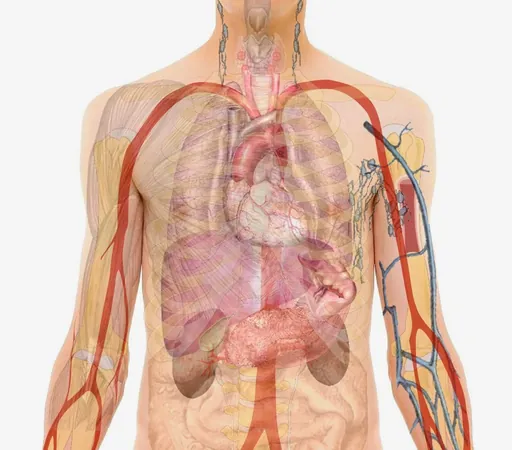
Cells Under Electrical Surveillance: How Epithelial Tissues Expel the Weak
2025-09-15
Author: John Tan
Unlocking Cellular Secrets: How Our Bodies Remove Vulnerable Cells
Inside our bodies, a constant battle rages at the cellular level—some cells thrive while others lag behind, and the latter must be ejected to maintain health. A groundbreaking study from King's College London and the Francis Crick Institute reveals that epithelial cells, which line our organs, use electricity to identify and expel their weaker counterparts.
The Constant Renewal of Epithelial Cells
Epithelial cells are not just passive layers; they actively renew themselves to create a protective barrier. Successful extrusion—the removal of damaged or excessive cells—is essential for maintaining tissue structure and function. When this process falters, chaos ensues, leading to an increased risk of diseases like cancer and chronic inflammation.
Electricity: A Key Player in Cell Selection
Research shows that overcrowded conditions provoke a dramatic response. While some cells are mechanically squeezed out, others are targeted based on their energy status. Sodium floods into the cells through ion channels, triggering electrical changes that distinguish healthy cells from the weaker ones.
Homeostatic Early Shrinkage: The Prelude to Extrusion
Researchers discovered a fascinating early sign before a cell is expelled: a brief shrinkage that indicates water loss. This 'homeostatic early shrinkage' affects about 70% of the cells targeted for extrusion and is regulated by ion channels that control water movement, specifically potassium and chloride channels.
Low Energy—The Cell's Death Sentence
Time-lapse studies revealed that cells facing extrusion showed a decrease in ATP levels, the energy currency of the cell, before they shrink and are expelled. Artificially lowering ATP levels further confirmed that energy deficiency directly leads to cell removal. Essentially, epithelial tissues conduct a 'fitness test,' eliminating those unable to maintain their electrical balance.
Implications for Health and Disease
This novel understanding of epithelial cells not only reveals how they eliminate weaker members but also illustrates the connection between metabolism and various diseases. For instance, overconsumption of food could disrupt this delicate balance, allowing defective cells to accumulate and trigger cancer. Similarly, energy deprivation post-stroke could lead to excessive cell extrusion, resulting in organ damage.
Conclusion: A New Perspective on Epithelial Functionality
In summary, this research transforms our view of epithelial tissues from static barriers to dynamic, electrically-sensitive communities that actively manage their health. Cells that cannot meet energy demands are purged to protect overall tissue integrity, revealing a fascinating interplay between energy status, cell survival, and disease.
With these insights published in the journal Nature, the findings promise to reshape our understanding of cellular dynamics and disease progression.


 Brasil (PT)
Brasil (PT)
 Canada (EN)
Canada (EN)
 Chile (ES)
Chile (ES)
 Česko (CS)
Česko (CS)
 대한민국 (KO)
대한민국 (KO)
 España (ES)
España (ES)
 France (FR)
France (FR)
 Hong Kong (EN)
Hong Kong (EN)
 Italia (IT)
Italia (IT)
 日本 (JA)
日本 (JA)
 Magyarország (HU)
Magyarország (HU)
 Norge (NO)
Norge (NO)
 Polska (PL)
Polska (PL)
 Schweiz (DE)
Schweiz (DE)
 Singapore (EN)
Singapore (EN)
 Sverige (SV)
Sverige (SV)
 Suomi (FI)
Suomi (FI)
 Türkiye (TR)
Türkiye (TR)
 الإمارات العربية المتحدة (AR)
الإمارات العربية المتحدة (AR)